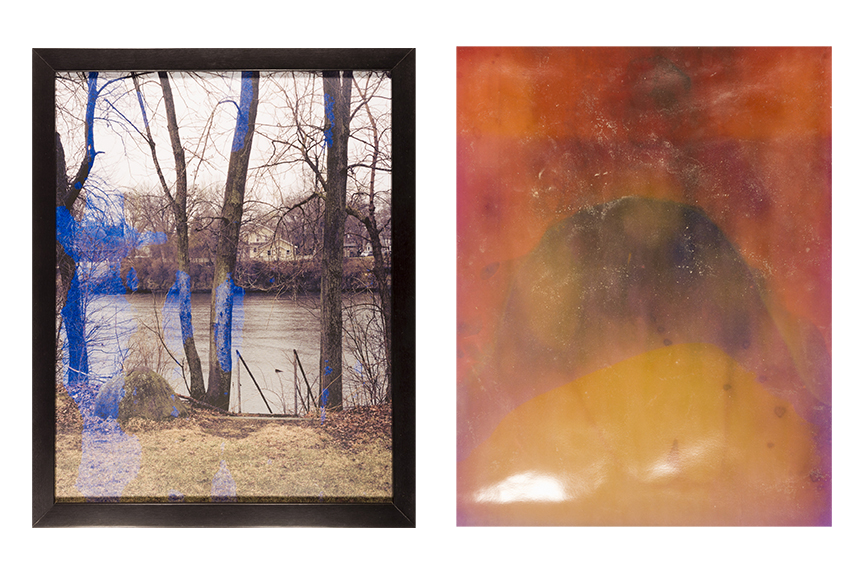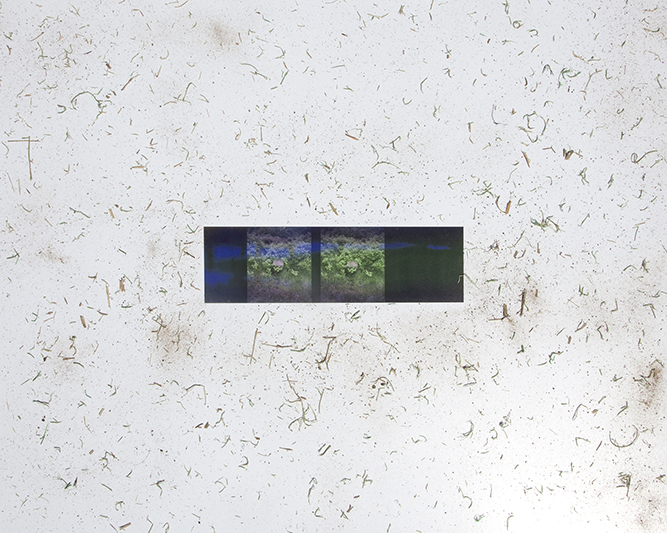About the Photographer
Bolen, Jeremy
American, b. 1977
Jeremy Bolen is interested in site specific, experimental modes of documentation and presentation. Much of his work involves rethinking systems of recording in an attempt to observe invisible presences that remain from various scientific experiments and human interactions with the earth's surface.
For the image, Plot M #1 (2014), Bolen buried film in a forest preserve near Argonne National Laboratory, just outside of Chicago. Radioactive remains from the Manhattan Project are found at certain locations there but these leftovers aren’t necessarily visible. The world’s first working nuclear reactor is encased in cement beneath a clearing know as Site A. Nearby, six stones demarcate an area (Plot M) where nuclear waste is hidden underground. Bolen’s works integrate photographic representations and dirt samples from these sites, but also unexposed frames from his unearthed film, which reveal chromatic anomalies and other residual markings that are potentially formed by radiation.
In Above/below ground in the fox river at npl-1 (2012), as part of his Undark series, Bolen investigates the history of two factories that were based in Ottawa, IL in the 1920s. The factories used Undark, a paint laced with isotope radium-226 to create glow-in-the-dark dials for wristwatches. Dozens of the factory workers—many of whom were women—died of radium poisoning from exposure to the material, which is still present in the Fox River. Bolen photographs the site and buries his exposed but undeveloped rolls of film near the banks, resulting with the same abnormalities as in Plot M. He then places his film in the river, exposing it for only a second, allowing the water also to expose the film with its radioactive content. Bolen then applies dirt from the site onto the final photograph, creating a rough surface that deepens the relationship of the artwork to its place of origin.
The image, Untitled (2014), is not specified as documenting a particular place, in contrast to the importance of location to his other works. Instead, this strip of film is emblematic of an effort to represent a particular place in various ways—to try to know it on both visual and material terms. In one frame, a lake is depicted photographically. At the other end of the film strip, the celluloid has been dipped in the lake’s salty water, which leaves its mark palpably. In between are empty frames, their blackness hinting at the limits of vision or the existence of aspects that elude documentation altogether.
Jeremy Bolen completed his BA at Columbia College Chicago (2002) and his MFA from the University of Illinois at Chicago (2012). His work has been included in the Catherine Edelman Gallery’s online gallery showcasing emerging and established photographers in Chicago. Exhibitions include Cern, Andrew Rafacz Gallery, Chicago (2013), and Leftover and Leaving: Abandoned Resort Towns, Rainbo Club, Chicago (2008). Bolen is currently on faculty at Triton College, River Grove, IL; an instructor at the School of the Art Institute of Chicago; and a teaching artist for nonprofit arts education programs serving at-risk youth in Chicago, Early Exposures (Chicago Youth Programs) and Marwen Institute.
--Text adapted from Karsten Lund from the exhibition, Phantoms in the Dirt, at the Museum of Contemporary Photography (July 24 – October 5, 2014)




